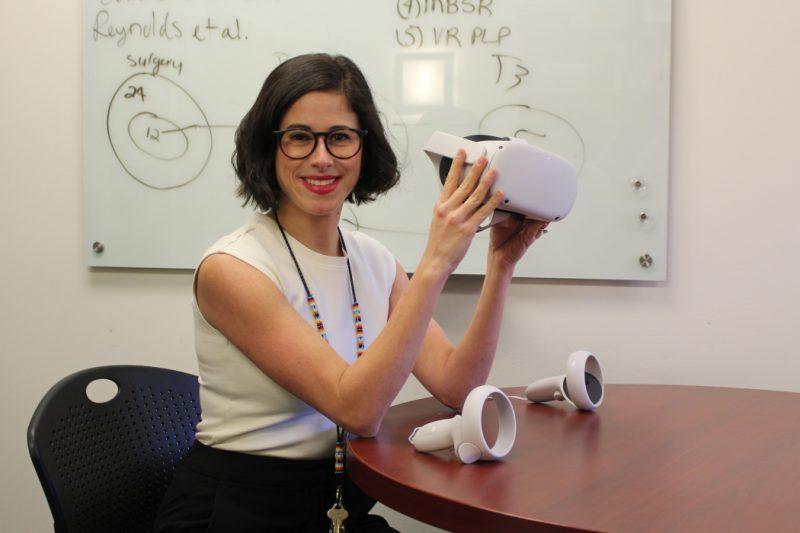Canadian mothers face a high rate of severe, long-term injuries from the use of forceps or vacuum in childbirth, and urgent action is needed to reduce it, the authors of a new analysis paper say.
Operative vaginal delivery (OVD) refers to using forceps or vacuum in the second stage of labour when the cervix is fully dilated. Health-care professionals may need to use the instruments if labour stalls or if the fetus is at risk.
In an article published Thursday by medical journal BMJ, epidemiologist Giulia Muraca, an assistant professor in obstetrics and gynecology at McMaster University, and her co-authors note that Canada has the highest rate of maternal trauma during forceps- and vacuum-assisted deliveries out of 24 high-income countries. Canada's injury rate was 16 per cent, compared to an average rate of 5 per cent for the group.
The paper says that of the more than 35,000 single infants born after OVD in Canada, one in four attempted forceps deliveries and one in eight attempted vacuum deliveries resulted in obstetric trauma — most commonly, obstetric anal sphincter injury, which involves severe tearing to the perineum.
Up to 15 per cent of deliveries in Canada include the use of forceps or vacuum.
"These rates of injuries are absurdly, unacceptably high," Muraca said in an interview. "And there's been … no concerted effort to reduce them. Perhaps even worse, we're not even recognizing or talking about them."
WATCH | Canada has an 'absurdly high' maternal trauma rate from forceps births
'Worried that my son might die'
When Laura Ralph of Vancouver gave birth to her son seven years ago, she recalls it was a chaotic and anxiety-provoking experience. The doctors told her the fetal heart rate was falling and they needed to use forceps to deliver him quickly.
"At one point, I was worried that my son might die and that I might die," Ralph said through tears.
Ralph needed a blood transfusion in the operating room. The forceps also contributed to pelvic prolapse, which happens when the pelvic floor muscles weaken, she said. In her case, her bladder fell into the vaginal wall.
Long after her son's birth, Ralph said, she was dealing with lingering mental health issues, as well as the long-term effects of pelvic prolapse, including not being able to exercise as strenuously as she would have liked.
The Current19:43Hidden trauma of birth injuries in Canada
When she later became pregnant with twins, she had a planned C-section.
Episiotomy and other options
Ralph contributed to the BMJ paper as a patient partner because she hoped it might prevent others from experiencing what she did, she said.
More severe perineal tears can lead to pelvic pain, sexual dysfunction and fecal and anal incontinence, which "can have devastating effects on social, psychological and physical wellbeing," the paper says.
Other countries like the Netherlands, Finland and Sweden have zero per cent injury rates after they abandoned use of forceps altogether because of issues with maternal trauma, Muraca said.

Dr. Modupe Tunde-Byass, an obstetrician and gynecologist focused on high-risk births at North York General Hospital, said health-care providers decide whether to use forceps or vacuum on a case-by-case basis.
In trained hands, they are still safe options, said Tunde-Byass, who was not involved in the paper. But she added that women should be empowered early in their pregnancy to learn about alternatives, including C-sections and episiotomy — a surgical cut made at the opening of the vagina during childbirth, to aid in a difficult delivery and prevent tearing.
However, Canada has moved away from episiotomy since a landmark clinical trial in 1992 found that having the procedure could cause just as much trauma as going without it for vaginal deliveries that happen after the natural onset of labour.
"It's being demonized," Tunde-Byass said. She added that many health-care providers will avoid performing episiotomies because they can negatively affect their quality improvement ratings.
However, both she and Muraca say that when providers correctly perform an episiotomy during operative vaginal delivery, many of the injuries are prevented.
More research from other countries is beginning to back that up, the BMJ paper says, showing less risk of obstetric anal sphincter injury when an episiotomy is performed at an angle that keeps the incision from extending into the sphincter.
Focusing on prevention
Muraca suggests Canada should take a page from the playbooks of Australia and the U.K., where lowering rates of maternal trauma is a national priority. In addition to their greater acceptance of episiotomy, they put more emphasis on prevention.
For example, she says, expectant mothers in the U.K. will receive a "bundle" of care that includes pelvic floor exercises they can do before childbirth.
Dr. Amanda Black, president of the Society of Obstetricians and Gynecologists of Canada, cautions against comparing countries as the BMJ paper did, saying the comparisons may not be fully apples-to-apples.
"Having said that, I don't think we can discount the fact that there is some concern about the fact that our rates of obstetric sphincter injury may be higher than compared to our colleagues," she said.
Severe childbirth injuries from forceps, vacuum 'unacceptably high' in Canada, research shows - CBC News
Read More


No comments:
Post a Comment